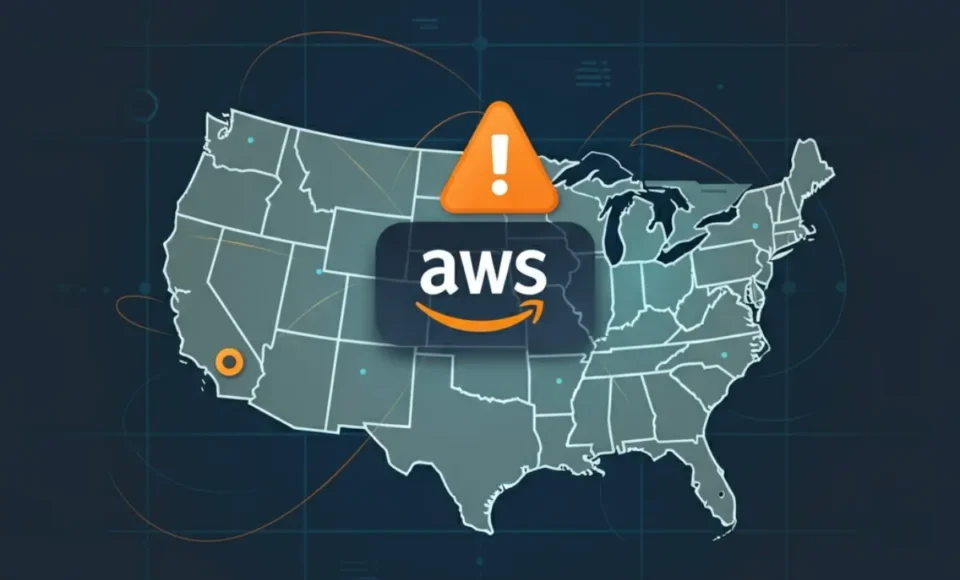A widespread wave of amazon aws outages left people and businesses across the United States struggling to access a variety of popular sites and services.
NEW YORK, Oct. 21, 2025 — Businesses and countless internet users across the U.S. woke up to a frustrating reality today: a massive cloud service disruption from Amazon Web Services. Early reports revealed websites were sluggish or offline, major apps weren’t loading, and internal systems for companies large and small were suddenly out of reach. If you had trouble streaming your favorite show, accessing an online store, or collaborating with coworkers this morning, you weren’t alone during these amazon aws outages.
Why Amazon AWS Outages Matter
Amazon AWS outages don’t just affect a handful of sites—they send ripples throughout the digital economy. Amazon Web Services provides the digital foundation for thousands of companies, government agencies, and everything in between. When AWS goes down—even for a few hours—the ripple effects spread quickly. Dependence on one provider means a single issue can impact dozens of services at once, from online banking and shopping to healthcare platforms and workplace software.
How the AWS Cloud Outage Played Out
This latest incident of amazon aws outages was focused mainly on the US-East-1 data center in Virginia. If your favorite apps or business tools were acting up, this may be why. The outage hit Amazon EC2—used for virtual computing—and S3, which handles cloud storage. Businesses relying on these saw error messages, slow load times, or total service interruptions.
The problems weren’t limited to one sector. Streaming platforms lagged or froze, e-retailers pushed out service alerts, and office productivity software suddenly became unreliable. Many affected companies quickly took to social media to update frustrated customers.
Amazon Responds to the Service Disruption
Not long after reports started coming in about the amazon aws outages, Amazon posted updates to their AWS Service Health Dashboard. They acknowledged “increased error rates” affecting several key services in the impacted region. Throughout the cloud outage, AWS tech teams were working to find the root cause and restore access. “We apologize for any inconvenience,” Amazon stated, keeping users updated as fixes were implemented.
Expert View: Why Cloud Resilience Matters
Network and cloud experts who weighed in today weren’t surprised that such a large system could experience trouble, but they pointed to the growing need to diversify. As tech analyst Lisa Myers noted, “This kind of Amazon Web Services downtime is a wakeup call. Businesses need to plan for outages by building redundancy, such as using more than one cloud provider or spreading systems across multiple regions.”
What U.S. IT Teams Can Do Next
Whenever there’s an outage like this, IT professionals have to act fast. Here’s a quick checklist for future amazon aws outages and other cloud disruptions:
- Review your set-up: Build critical apps so they work in more than one cloud region—or better yet, on different cloud providers.
- Plan your communications: Make sure your team and customers get timely, clear updates about service interruptions.
- Keep tabs on AWS status: Regularly check the AWS status page for real-time info during incidents like today’s.
- Test your backups: It’s not enough to have a failover plan—test it regularly to make sure it works when you need it most.
Looking Ahead After the Amazon AWS Outages
Now that Amazon Web Services is gradually restoring full operation, affected businesses are starting to come back online. It may take more time to assess the total impact of these amazon aws outages. If you rely on affected platforms, keep an eye on the AWS Service Health Dashboard for ongoing updates.
For those interested in building stronger systems, the National Institute of Standards and Technology (NIST) provides best practices for cloud resilience, offering valuable guidance for companies of all sizes.
Today’s disruption is a reminder of how much life in the U.S.—from work to entertainment—depends on reliable cloud service. It also serves as a prompt for companies big and small to reassess their resilience strategies, so the next amazon aws outages won’t hit quite as hard.

